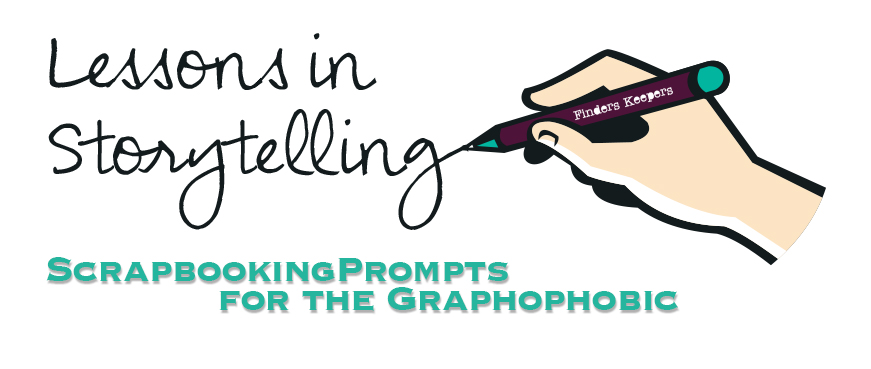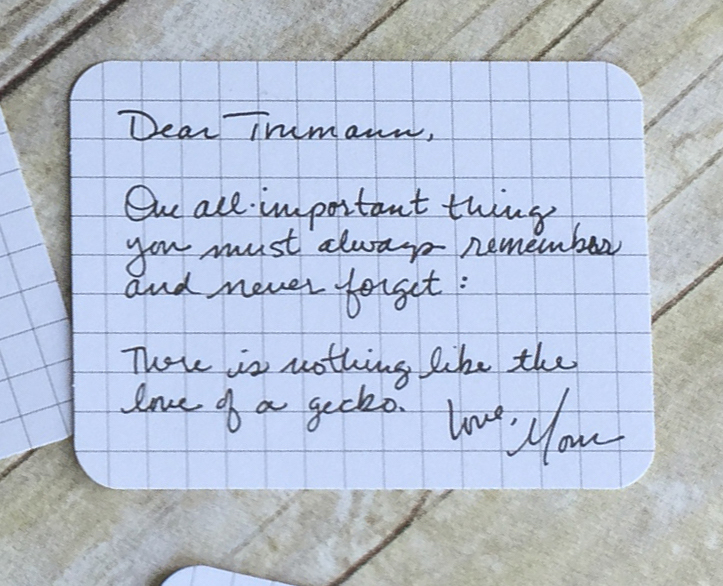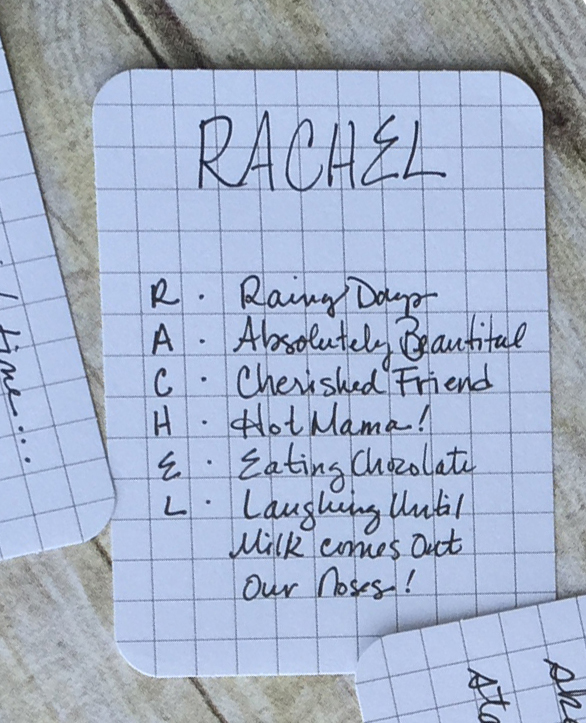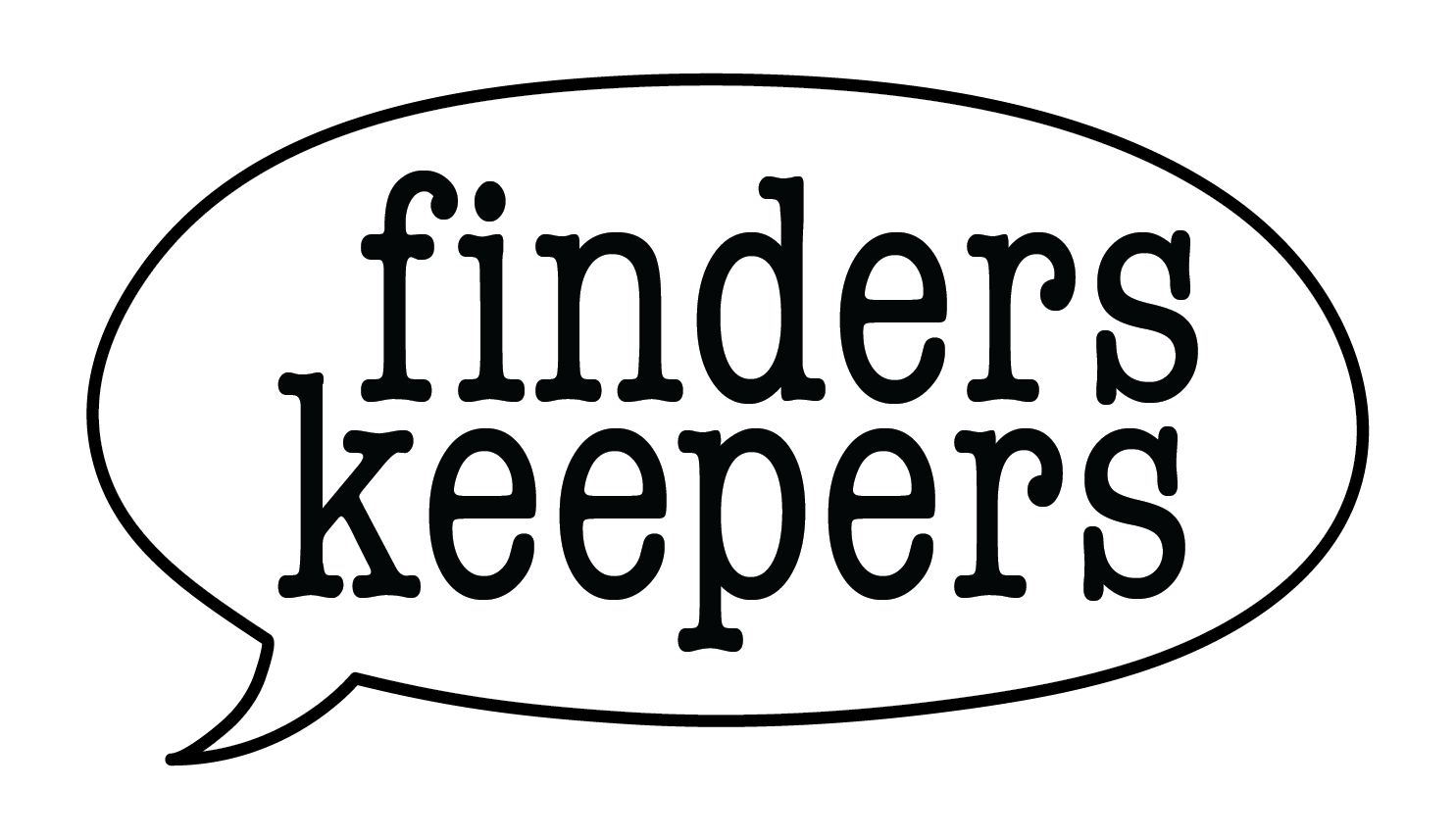
 Welcome back! (If you missed our first post on journaling your memory albums, check it out here.)
Welcome back! (If you missed our first post on journaling your memory albums, check it out here.)
Hopefully, our initial argument for journaling hit home and you are now ready to embark on a journey of self discovery, as a writer. This time we want to set you up for success, with some of the all-time favorite, can’t-miss, sure-thing journaling prompts known to the memory keeping universe.
Before we begin, though, there is one rule we have. One condition. No matter what you write or how you write, you must always begin with what you know. All this means is that your journaling, like your life, should be straightforward and honest. Because, in the end, memory keeping, like all things, is about writing. We are, after all, here in this business of taking and preserving pictures to tell the stories of our lives. And, while a picture may be worth 1,000 words, words have the power to change meaning, create mood, inspire action, instill love. So, as our preschool teachers used to remind us, it’s time to “use our words.”
So tell your story. Keep it simple and in your words—idiosyncrasies and all! Don’t try to be all Emily Dickinson all over the place. And you aren’t Shakespeare, either. You are you.
Your words are beautiful
and quirky and all yours.
Your people love your voice.
So use it.
5 Simple Sentence Starters
Use these when all else fails. They are the bread and butter of memory keeping, so tuck them in your pocket and keep them with you always.
I remember when…
Today I learned…
I love you because…
My favorite things about you are…
A funny thing happened…
Prompt Strategies
Here are 12 ideas that may inspire you to develop your journaling in your own way.
- Try a “what I love about this” sentence:
What I love most about this is….. - Tell the story of the picture:
Here’s what happened…. Be personal. In June of 2014 we went to Yosemite National Park is a start, but move beyond the facts: When I saw Halfdome for the first time, I couldn’t believe how massive it is! - Talk about the journey that the picture represents:
In October we begin garage sale hopping…..  Talk about the why of the picture—why is the thing happening?:
Talk about the why of the picture—why is the thing happening?:
Here’s why I love doing Disneyland with kids…… Talk about what someone is learning in the picture—the lightbulb moment when your subject: Life lesson #452: Never eat ice cream while swimming!- Talk about when someone understood something for the first time or you saw someone or something with fresh eyes.
 I never noticed how blue Erik’s eyes were until I saw this picture…..
I never noticed how blue Erik’s eyes were until I saw this picture….. - Tell your story backwards—begin with the ending:
We all got home safely, thank goodness, but the car was never the same! or in the middle: We ran to the water’s edge, all thought of what had transpired between us gone - Tell a Day in the Life of story
Our Day begins….by noon we are usually……finally we end the day with some close family time. - Write what you think the subject might be thinking:
Canyons have layers, ogres have layers… - Tell the story of the picture.
Once upon a time, there was a little girl and a father who loved her very much….. - Tell about the subject’s personality.
Ashley all the way: a study in contrasts. Bashful and outspoken, strong and gentle, fierce and kind.  Write a letter (especially good for your children, who will treasure it as they get older and have children of their own)
Write a letter (especially good for your children, who will treasure it as they get older and have children of their own)
Dear Elisabeth, one thing I want you to know, no matter what…..- Or a letter to everyone:
An Open Letter to the Future: whatever you do, always remember and never forget that certain days are really worth remembering. Take pictures!
Other Kinds of Journaling
Lists or bulleted lists
Lists are great because they are quick and convey the essence of what you want to say without a lot of fuss or drama. You can list personality traits, items in the picture, names of people in the picture, things you did that day, whatever. Just remember to do it in your own handwriting, to add that all-important personal touch. For an additional personal touch, try just doodling a little bullet next to each item in the list.
alphabet lists
 You may remember these from elementary school, where they are called acrostic poems. Here is one Sarah made about her business partner, Rachel:
You may remember these from elementary school, where they are called acrostic poems. Here is one Sarah made about her business partner, Rachel:
Currentlies
Currentlies are lists of what is going on currently in the subject’s life. They are great for layouts about children, because those lists change so much over time. So list what the person is currently reading, what music they like right now, what video games they are playing, what their favorite foods are, what their hobbies are. You get the picture.
Quotes
Quotes are okay in a pinch, but we always recommend using them sparingly. After all, they aren’t really your words, and therefore aren’t in your voice. Your people want YOUR words! But they can be fun from time to time and some quotes are too fabulous to pass up.
Collect quotes that speak to you. Quotes abound these days. I have a Pinterest board full of them. My Instagram account is filled with pretty pictures and quotes. A word of caution: try to find the quote that isn’t part of the “white noise” of quoting. Better yet, quote the people in the pictures “Stori always calls this game ‘Jumping to the Moon’”; carry a notebook (or use your phone) to jot down great things your kids, family and friends say.
Stretch yourself a bit and try an haiku. Haikus are little poems that capture the essence of their subject simply and beautifully and they are seriously fun to write! They consist of 3 lines–the first line is 5 syllables, the second line is 7 syllables and the final line is 5 syllables. Here is my haiku about scrapbooking:
 And the middle line has 8 syllables. And, you know what? No one cares. So give one a try! Impress your friends!
And the middle line has 8 syllables. And, you know what? No one cares. So give one a try! Impress your friends!
Thanks for stopping by!
Save


Great article, thank you for the suggestions
Journaling cards make it easy. Sometimes a smaller space is less daunting.